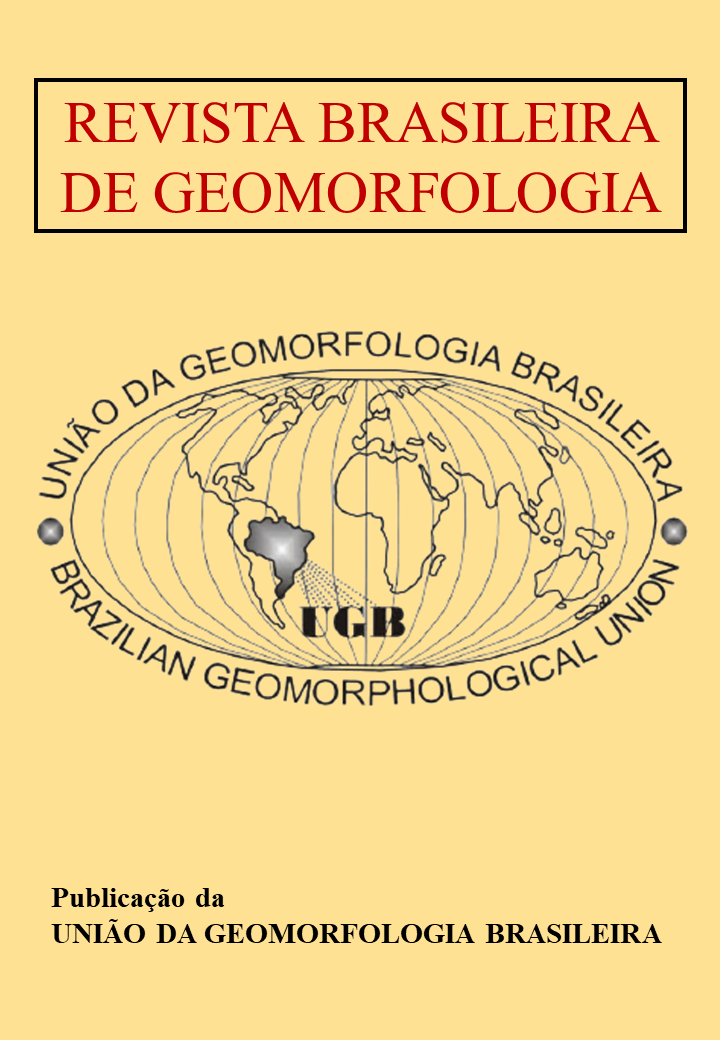Detailed and Semi-detailed Geomorphological Maps: A review of relief representation in thesis by the São Paulo state’s geography postgraduate programs by the beginning of the 21st century (2001-2018)
DOI:
https://doi.org/10.20502/rbg.v24i3.2377Keywords:
Mapping, Classification, LandscapeAbstract
Geomorphological Mapping has a diversity of methods and symbology mainly because of its complexity, especially in detailed and semi-detailed scales. 22 thesis and dissertations produced in four of the Postgraduate Programs of Geography in the state of São Paulo at the beginning of the 21st Century were analyzed. Criteria for selection were the year of publication, scale, downloadability, legibility, and description of procedures. Questionnaires were applied to four researchers. Symbology of maps and questionnaires were analyzed and compared Hypothesis was that there would be differences in symbology and methods between each program, which would be related to different scales, purposes, techniques, environmental characteristics of the mapped area, and theoretical-methodological frameworks. Publications had different scales, symbology, and frameworks. However, Tricart (1965), Verstappen and Zuidam (1975), and Radambrasil Project were cited in most of the publications. At least seven factors seem to be related to diversity in these methods. Factors might include different theoretical-methodological frameworks, purposes, scale, characteristics of the mapped area, and availability of technology and data. The diversity of symbology and methods could make the comparison between maps more difficult but could also help with the adequation of methods for each context.
Downloads
Downloads
Published
How to Cite
Issue
Section
License

This work is licensed under a Creative Commons Attribution-NonCommercial 4.0 International License.
Author (s) retain copyright and grant the journal right of first publication with the work simultaneously licensed under the Creative Commons Attribution License that allows sharing the work with recognition of its initial publication in this journal.








